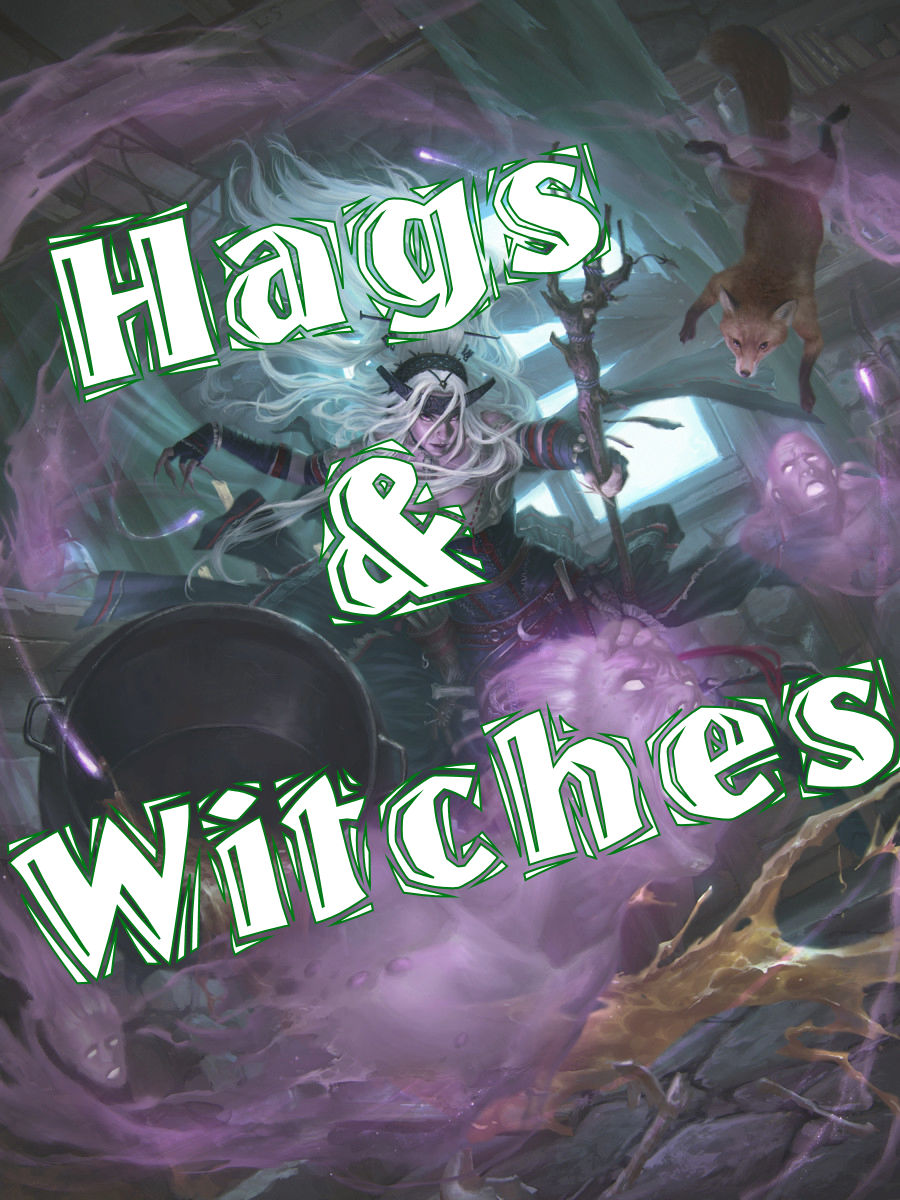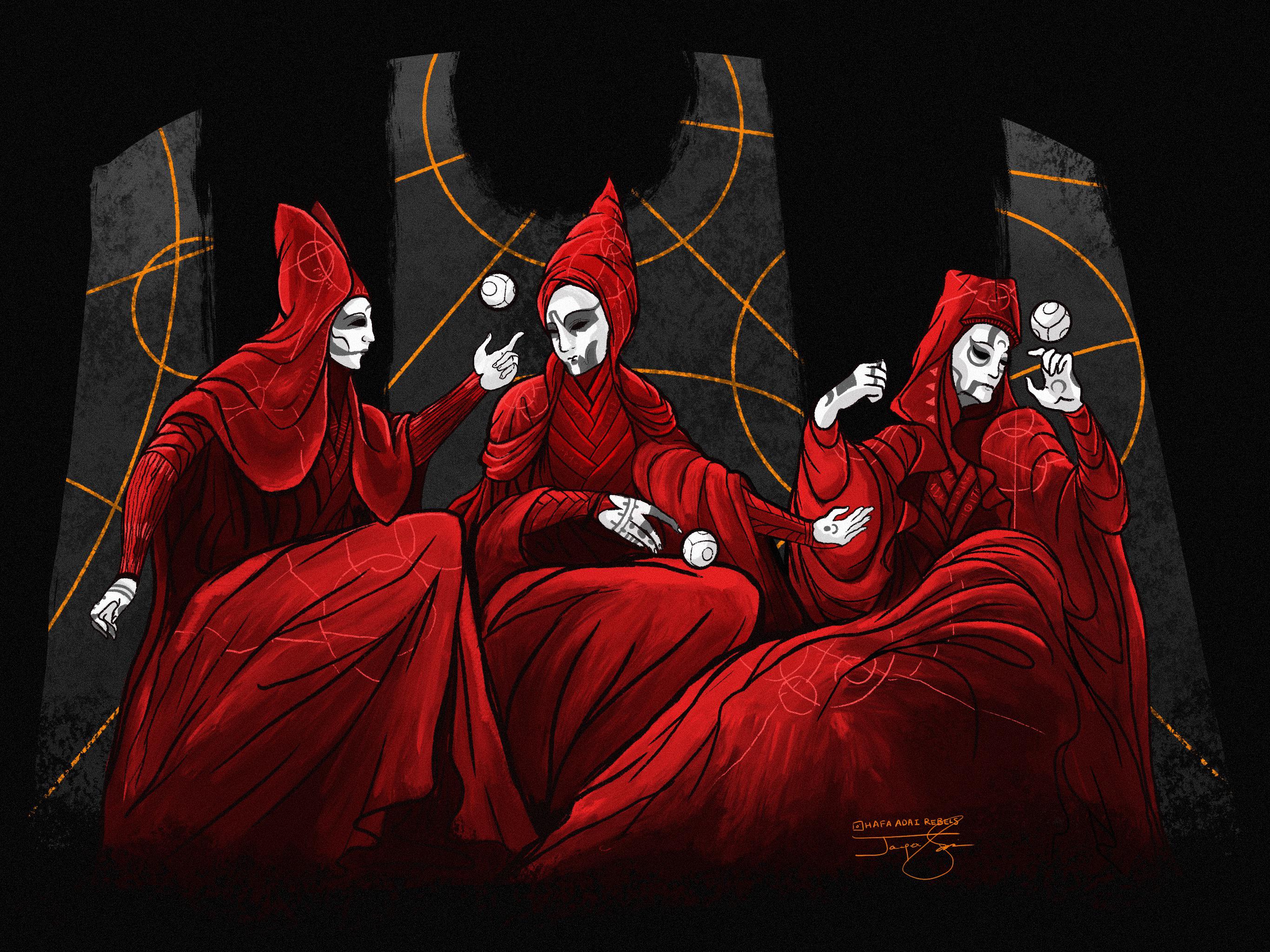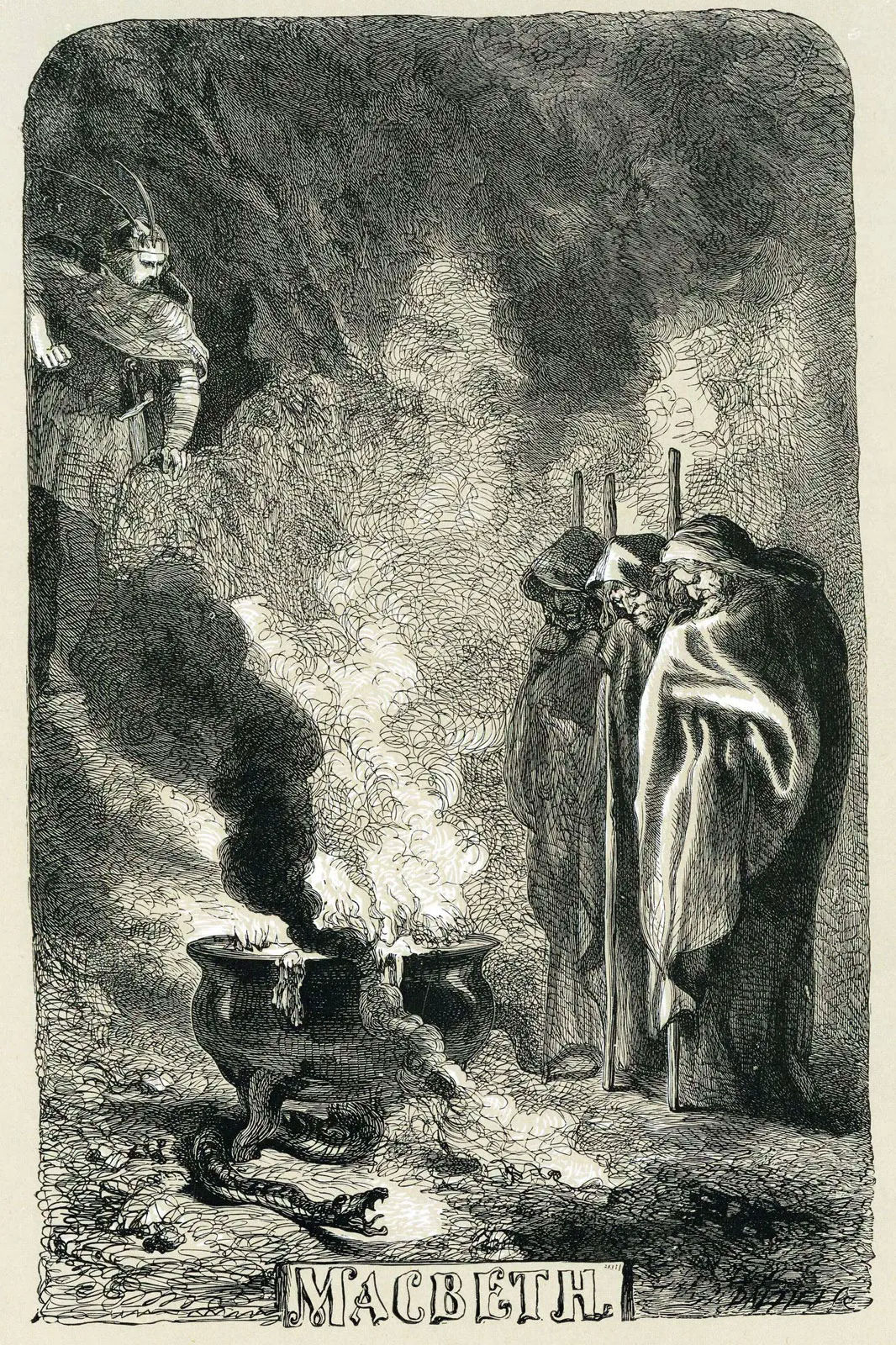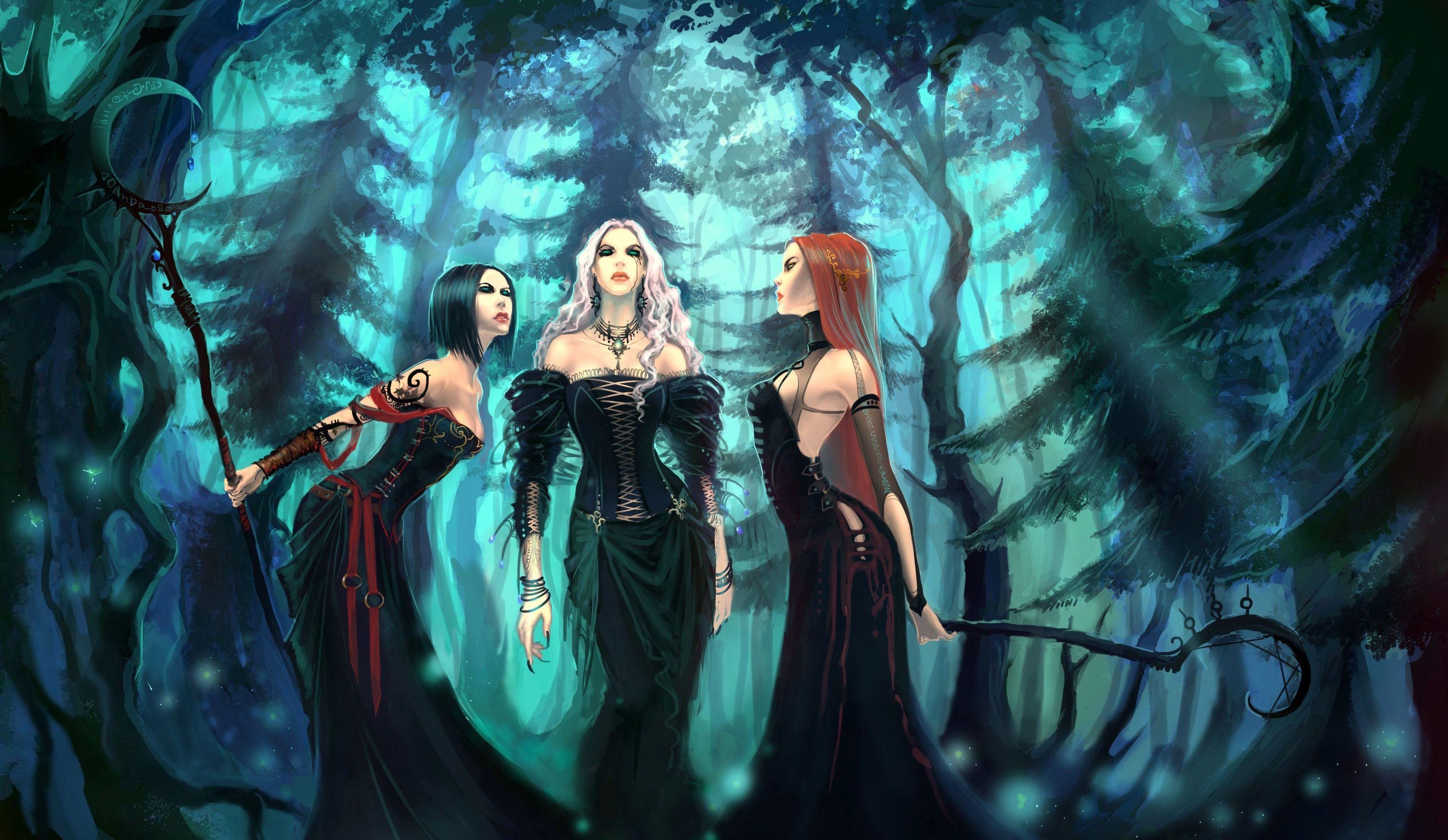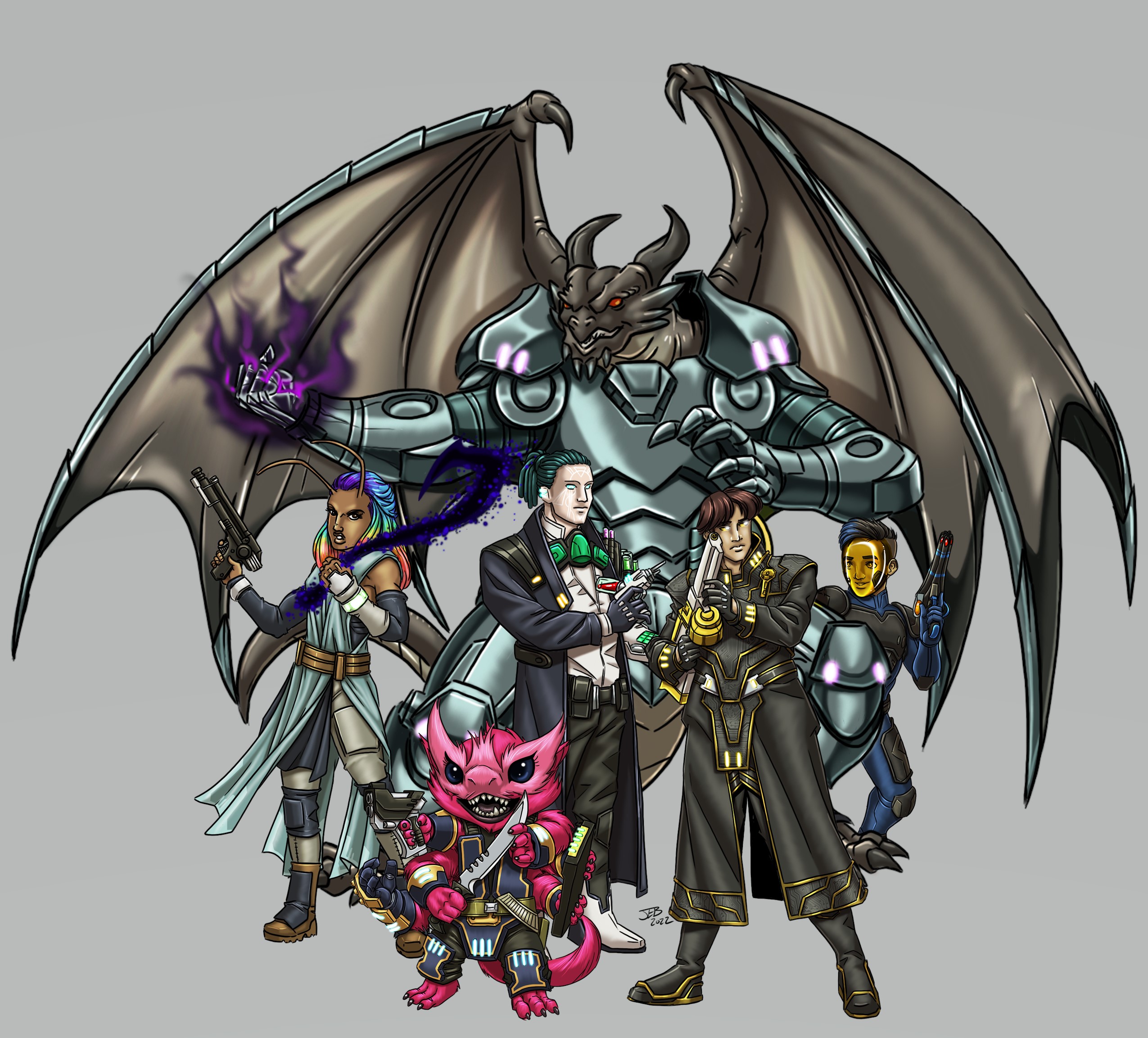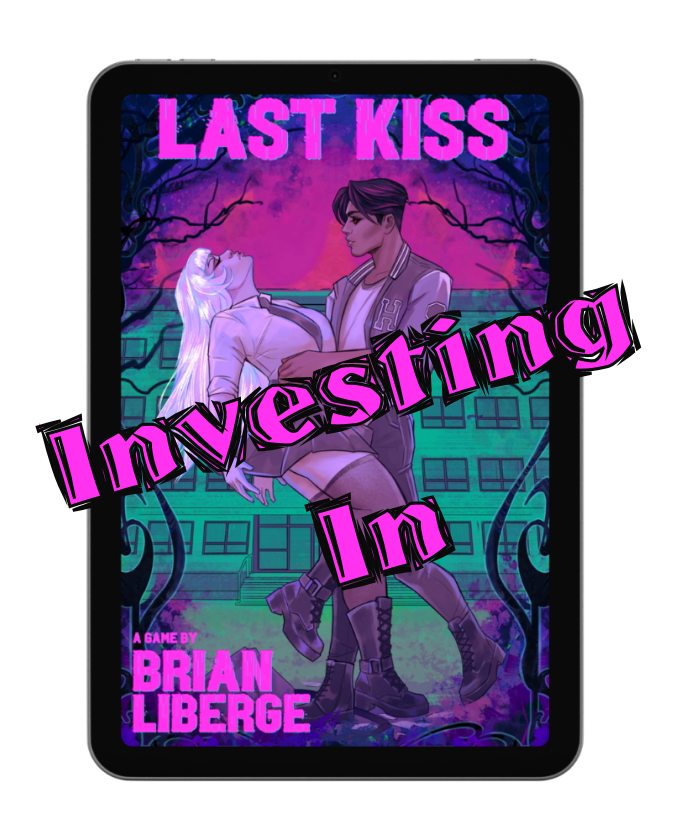“Hag: noun; a witch, especially one in the form of an ugly old woman” – Oxford Languages
I’ve had hags on my mind for Kingmaker. I can’t say exactly why, as it might be spoilers for those new to it, but it might come up. Hopefully that’s not shocking or spoilery considering it’s a wilderness campaign with fey and other creatures. Granted, hags aren’t always fey but we’ll talk about that later. Also shout out to Foundry for the Kingmaker announcement as it launched yesterday, September 27th! But it’s not just for Kingmaker, I tend to weave hags and witchy folk into all my games. They’ve been a staple of myth and folklore for centuries, appearing in various cultures and stories as malevolent, supernatural beings with a penchant for causing harm and chaos. They’re usually enigmatic, often grotesque, and they’re found in nearly every fantasy role-playing game. I thought for my own understanding as well as Kingmaker use I’d delve a bit deeper for an intriguing comparison between the folklore and the gaming. It also felt right as Spooky Season is here!
In Media / Literature
Now I don’t simply think of hags as old, ugly women with foul plots. Honestly, it all comes off as a bit sexist: stories created to demean wise women, possibly those of power. That’s why classic fairy tales tend to paint witches as old and ugly. Were they hags? Probably not, but we are taking a look at the stories and then gaming use of such. So, well I tend to think of them collectively. I think of the Wyrd Sisters from Macbeth (and the Gargoyles cartoon). The Norn from norse myth (and God of War). And I’ve long been fascinated by the Witches of Dathomir too. That’s a Star Wars reference that I won’t go into any further. For reasons… 5E makes their hags fey, though there are many types. Night Hags are fiends however. That’s true in Pathfinder as well, although otherwise hags are forms of humanoids. I did so love the hags running things in Eberron’s Droaam. They were wise, enterprising, and I featured them in a game I ran, manipulating fate in the way that helped the heroes but suited their needs as well. I’m a fan of the witchy sisterhood three of the characters have formed in Campaign 3 of Critical Role. It might be a druid, a sorceress, and a warlock but it works well. Matt’s even let them combine their powers for a coven-like feel. I have to assume the idea of power through sisterhood is what got them in that line of thought, though Laudna’s spooky undead vibes probably helped as she’s a very witchy warlock but more on that later.
Origins and Influences
But where do all these inspirations come from? Where’d Shakespeare pluck his ideas? Which cultures and religions influenced these future tales and uses? Witches are common in European folklore, and hags are often synonymous there. It’s all curses, spells, rituals, and everything we’ve seen from classic fairy tales and made less dark for Disney. Most know of Baba Yaga – who also appears in Golarion – as an Eastern European or Russian hag-like woman of dangerous power who lives in a hut on chicken legs. Still, sometimes she’s helpful, exchanging wisdom for some bargain. That feels very fey to me. Western and Northern Europe has a lot of similar tales with witches and old, ugly women living in secluded places. Again, sexist because apparently old men living in the woods are hermits but heaven forbid a woman in the wilds learns the best herbs to treat your ailments. If we look at Greek Mythology then perhaps the Graeae are an example and perhaps the inspiration for the Wyrd Sisters of Shakespearean writing? They were three sisters that shared an eye, lending to tales of the fates and well, Disney’s Hercules. It seems so many of these tales have the hags/witches hating humans, and so I wonder how much it’s malevolence versus the constant stream of guys showing up wanting answers and free magical artifacts.
I learned about Boo Hags that are witches that sold their souls for power and are similar to vampires. Apparently they are found in the Gullah culture, which I didn’t know about until doing some internet research. The Gullah are an African American ethnic group from the southeast US, with stories told from across parts of Africa that came along with them when forcefully brought to America. Again, using any inspirations from other cultures be sure to know, understand, and discuss with your table. Some hags in African religions are more like malevolent spirits that cause sickness. I went searching on Native American hags but didn’t find much that didn’t refer to dangerous spirits that used foul magic. On the Asian side I learned of the Filipino folklore around the Aswang, a sort of witch / vampire / werecreature that was cannibalistic. How much this story is truly Filipino versus the work of Spanish visitors and then it propagates through oral tradition is tough to say. I wonder again if this is more of talented or isolated women getting a bad wrap from a man who wanted something. Yes, I certainly started looking into some feminist writings and seeing where these stories might have come from.
Which Witch or Warlock?
Hags and witches have long been featured in our roleplaying games. I remember D&D 3rd Edition had a suggestion of what a witch’s spell list might be like. But otherwise, witches and hags were antagonists or at best, mysterious NPCs for you to encounter. I’d say the Warlock in 3.5 changed that. Some might say “oh that’s a male witch.” And maybe that’s a perception now, of some masc presenting practitioner of the occult arts. However, originally warlock is said to be derived from waerloga, an Old English word meaning oath breaker. Thus witches who broke their oaths to their covens were warlocks. You see, anyone can be a witch or a warlock no matter what their gender. And isn’t it interesting then that a witch had their coven of fellow witches they were likely bound to and a warlock did what? Why worked with nefarious sources of power like devils and evil spirits, hence the pacts that we came to see for Warlocks in 3.5. Now Witches in Pathfinder2E have patrons, but they can be in a nefarious or positive light depending what you might desire. They’re not just occult casters either, considering they could be divine or primal. And even then, the Remaster project is about to change that. Not sure how all that’s going to work yet, but stay tuned. What I’m basically getting down to is that witches aren’t the baddies, technically if anything Warlocks are. But say the witch coven was doing bad things, then isn’t a warlock a good thing? And isn’t it interesting we saw Warlocks before we saw Witches as PCs? But I digress… It all depends on your game and how your hags, covens, witches, warlocks and the like are presented. And even then your players may want to change it up, make spicy decisions.
Appearances Can Be Deceiving
Previously I was accustomed to hags being predominantly considered humanoid-looking fey of various appearance. D&D introduced a few different types from annis, green, sea, and of course night. Night Hags are fiends both in D&D and Pathfinder, but they aren’t fey in Pathfinder. They’re just a form of people, perhaps even changed people. Changelings as an ancestry might find themselves drawn to a hag or witch parent. They were first written to “only be women” though my brother played an Assigned-Male-At-Birth changeling back in 1E. Again, up to your game. Not all changelings or witches are women. So not all hags are either. Not all hags are ugly after all though maybe Bloog Hags aren’t the best example, as they wear the skin of others. Annis hags are large, brutish. Green hags are a bit closer to classic lore. Certainly Night Hags are nightmarish. My nonbinary witch Ateran is certainly frustrated with the nightmarish ways of at least one Night Hag. I didn’t even know Pathfinder had a Grave Hag, rotted like the grave but still humanoid, not undead.
What Sort of Power
Some hags, like the Annis, are powerfully strong. Others have tricks up their sleeves, but classically all have a bit of magic. Our witches learn hexes and curses are easy to acquire whether through the Occult spell list or choice on the arcane list. Maybe you choose a Changeling Sorcerer with the Hag bloodline! You’ll get a few curses, and again use the Occult spell list. But there are those witches tied to nature like those with the Wild or Winter patron themes. Some have rare, unique abilities as well like the Moon Hag’s Dreadful Prediction or the Night Hag’s Dream Haunting. Singularly they can be dangerous, but together hags are very dangerous. That’s where Covens come in. I find it remiss that there isn’t a Coven feat for the Witch class but every hag contributes certain spells to a Coven they join. The Coven ability specifically makes all hags that are members their Elite versions. They can sense one another’s locations and they get additional spells to use but must be cast as joint activities. I’d forgotten all the spells they get automatically when forming a coven like baleful polymorph, charm, and prying eye. They get to use the Control Weather ritual as well. In a way a witch is more powerful than any hag, but not necessarily a coven unless that witch is particularly talented (or has a high level). I do sort of like the idea that a corrupted witch (again, any gender) could become a hag. I don’t think I’ve seen any masc-presenting hag art but it’s your game, your world. Do what you will.
It’s Tradition, Maybe
Covens got me thinking on the cultures hags form. Their society isn’t so much a community as a loose forming of traditions based on what empowers them. However, there has to be a bit more than that based on what hags might teach a young changeling. Religion usually plays a part in teaching such traditions. We know there’s a goddess of hags called Gyronna. She’s evil, she hates forgiveness, and expects you to expose hypocrisy in others. There is mention that her worshippers include fallen women, so maybe she’d not favor a wronged man much. Her possible origin is that she was once fey and angered a rival like Baba Yaga. Could it be that cursed witches become hags? I like that idea as an origin for some hags; it doesn’t have to be all. Gyronna apparently lives in the Abyssal realms and hangs with Night hags. None of that surprises me, but I can’t imagine if she’s so vile, focused upon angry women getting revenge, that much can exist in a way of an organized church. However, we know from Kingmaker – and I won’t give away the spoilers of where – that at least one such abbey existed for Gyronna with men living there. So she did have her male worshippers and presumably a priest or two with divine power. With hatred and spite as part of her areas of concern, it fits hags who are often depicted as hating humanity or getting revenge – or trying to eat – those living nearby. Again, I don’t see that promoting much in the way of culture but between other monstrous influences, Lamashtu, and a strong enough Coven you could have a very dangerous society living in secret within a town or out in the wilds. Perhaps a Coven of 20 or more takes in angered women to use as pawns, teaches some of these humanoids and changelings specifically the ways of witchcraft to enact revenge, and encourages a power-hungry, manipulative power structure. I’d likely enact some sort of Coven law that those within the Coven are not to be challenged but supported. You could quickly turn the script from just catty, ugly hags to a society of women supporting one another and getting justice on those who wronged them.
In Your Game
I thought I’d highlight a few ways to use Hags in your games besides what I’ve called out in all my research reflection musings. There are a few keys themes to work with. Hags in folklore often represent the fear of the unknown and the dark mysteries of the natural world. They embody the idea that hidden forces can disrupt our lives and bring chaos and misfortune. Thus in your game they might be symbols of hidden dangers lurking beneath a town or a full on city. Maybe they’re manipulating the people above while their coven grows in the sewers. Players and their characters must navigate their treacherous schemes and uncover the secrets behind their malevolent actions like what a seemingly good, respected member of the royalty did to cause the hatred of the Grand High Witch. Hags in that way can also be a reflection of society. I’ve mentioned at length how I felt I had to do some feminist readings as I read up on witches and hags. They reflect societal anxieties about aging, female power, and the consequences of breaking societal norms. They are cautionary tales about the consequences of straying from the expected path. And it’s frankly, bull. No one has to conform to societal norms of gender or what a ‘woman’ should do or look like. But of course, some backwoods townspeople might not trust that old woman in the woods. That’s up for you to decide, and again remember to check on veils and lines with your players as this might not be something someone wants to see reflected in their game. But if it’s okay, you can have these Hags be a reflection of the darker aspects of a particular society or country. Perhaps as people are corrupted they become Hags, so it’s actually those spreading vile hate are becoming the hags. Maybe it’s those studying dark magic, or just using magic for vile purposes. Imagine if greedy CEOs and those with unchecked ambition were twisted in vengeful, power-obsessed hags!
I hope my little essay here on hags and witches gives you some thoughts about how we view others and unconscious bias we might have. It’s important to think of why the stories we read and grew up with might influence us and where their origins truly came from. But also, it’s okay to have some fun with dangerous magic and monstrous hags too. Just remember to invest in the cultures and backgrounds of all you utilize in your games, talk with your table, and have some fun. Maybe it’s spooky and vile like a certain hag in Baldur’s Gate 3, but maybe there’s a greater plot afoot and that hag isn’t as evil as you thought!
Investing In:
I wasn’t quite sure what to name my article series when I first started but the idea of showcasing or discussing things that make me excited, that I find new and interesting, or maybe I’m otherwise passionate about seemed to fit with the idea of Investing In something like the Pathfinder 2E mechanic. To use some magic items you have to give that little bit of yourself, which helps make these things even better. I like the metaphor of the community growing and being strengthened in the same way!
I also want to hear what you’re Investing In! Leave me a comment below about what games, modules, systems, products, people, live streams, etc you enjoy! You can also hit me up on social media as silentinfinity. I want to hear what excites you and what you’re passionate about. There’s so much wonderful content, people, groups (I could go on) in this community of ours that the more we invest in and share, the better it becomes!
Sources
Banner – Blood of the Coven cover image, text added, Paizo, image by Lie Setiawan
- Baba Yaga Fighting, Paizo, image by KateMaxpaint
- Great Dathomiri Witches, Creative Commons Attribution, hafaadairebels
- Macbeth’s Weird Sisters, John Gilbert
- Witches blues, Creative Commons Attribution, anndr

